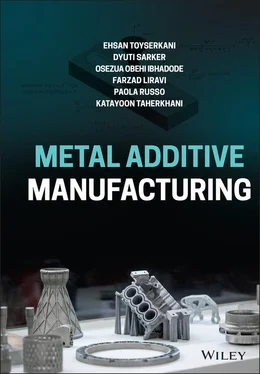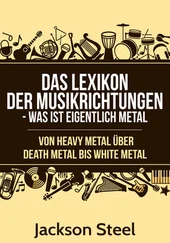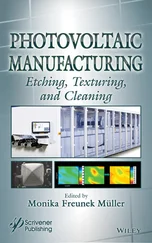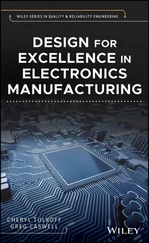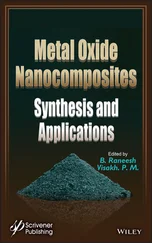Ehsan Toyserkani - Metal Additive Manufacturing
Здесь есть возможность читать онлайн «Ehsan Toyserkani - Metal Additive Manufacturing» — ознакомительный отрывок электронной книги совершенно бесплатно, а после прочтения отрывка купить полную версию. В некоторых случаях можно слушать аудио, скачать через торрент в формате fb2 и присутствует краткое содержание. Жанр: unrecognised, на английском языке. Описание произведения, (предисловие) а так же отзывы посетителей доступны на портале библиотеки ЛибКат.
- Название:Metal Additive Manufacturing
- Автор:
- Жанр:
- Год:неизвестен
- ISBN:нет данных
- Рейтинг книги:5 / 5. Голосов: 1
-
Избранное:Добавить в избранное
- Отзывы:
-
Ваша оценка:
- 100
- 1
- 2
- 3
- 4
- 5
Metal Additive Manufacturing: краткое содержание, описание и аннотация
Предлагаем к чтению аннотацию, описание, краткое содержание или предисловие (зависит от того, что написал сам автор книги «Metal Additive Manufacturing»). Если вы не нашли необходимую информацию о книге — напишите в комментариях, мы постараемся отыскать её.
A comprehensive review of additive manufacturing processes for metallic structures Metal Additive Manufacturing
Metal Additive Manufacturing
Metal Additive Manufacturing — читать онлайн ознакомительный отрывок
Ниже представлен текст книги, разбитый по страницам. Система сохранения места последней прочитанной страницы, позволяет с удобством читать онлайн бесплатно книгу «Metal Additive Manufacturing», без необходимости каждый раз заново искать на чём Вы остановились. Поставьте закладку, и сможете в любой момент перейти на страницу, на которой закончили чтение.
Интервал:
Закладка:
End‐to‐end workflow, integration, and automation: In industry, anytime a new material/process/design or technology is used, a lengthy qualification process must take place. This testing is intended to prove (with lots of margin) that this new material/process/design or technology can meet all of the performance requirements. Many customers are reluctant to accept a new material/process/design or technology that does not have “heritage” in their applications. To minimize industry hesitation on the AM adoption, an effective end‐to‐end workflow must be developed that is simple but yet integrated and automated. All major industrial and nonindustrial AM systems providers are proposing ways to integrate their systems into complete end‐to‐end workflows. While AM is the core part of digital production, integration and automation of the end‐to‐end workflow are a different entity and beyond AM. However, any integration/automation must be well thought in harmony with AM limitations and features. The lack of digital infrastructure at the moment is a major obstacle to move with effective automated workflows for the AM industry. Automation basically begins with an effective streamline of part design and optimization through Design for AM (DfAM) tools, driven by digital warehouses and digital twins. Automated material supply lines for feedstock (e.g. powders) through manufacturing execution software should be developed to coordinate AM systems and workflow stations. Machine learning and artificial intelligence, as well as simulation, inline process monitoring software, and nondestructive testing (NDT), should work hand by hand to oversee the AM process to correct errors via when robots will remove and depowder parts from AM machines, followed by powder recycling and reuse. Automated post‐processing heat treatment, polishing, etc. should be fully integrated into the aforementioned workflow. Automated AM is a part of the factory of tomorrow, a forefront of the ongoing industrial revolution within the industry 4.0 approach.
Software limitations: The commercially available software packages for the design of AM parts, support structure development, and interfacing with AM machines have limitations in assessing the feasibility of prints and identifying process constraints. In many cases, the ideas that are conceived and created in 3D modeling software exhibit major challenges to be printed mainly due to the issues with process constraints that are not included in the design. In addition, the current workflow software has limitations when it comes to AM to track individual items through each stage of the process to manage resources and delivery timelines. Another issue is associated with inter‐ and intra‐communication and collaboration that depends on the quality of information and transmission methods. The current software and hardware still need more improvements to facilitate timely communication in AM.
Initial financial investments: One of the major barriers for metal AM adoption is a substantial investment needed to AM capital and ecosystem to deploy it to production. The AM ecosystem covers software, materials, experts, post‐processing equipment, certification as well as training for employees. This investment could be enormous hindering companies from embracing this technology effectively. One solution to this challenge is to rely mainly on AM service companies to integrate into the supply chain to derisk the AM adoption in the early stage. University and R&D centers can play an important role in providing fundamental R&D required as well as training platforms for companies that are trying to adopt AM but cannot invest in it significantly.
Security: AM is fully integrated into the digital world; thus, its cyber–physical nature has raised major concerns. When AM has promoted globally distributed manufacturing, the existence of hackers is a reality. They can tweak the AM designs to create intentional defects that are not simply detectable but have catastrophic consequences while being used in actual systems. The vulnerabilities and large‐scale jobs conducted by commercial AM services may inherently be difficult to substantiate the quality of printed parts. The process and supply chains must firewall to address these security concerns. These measures could be the same as other manufacturing industries such as electronic printing; however, due to typical applications of AM‐made parts in critical applications such as jet engines, special validation procedures need to be developed to give assurance that the parts are not affected by the malicious attack in terms of intentional undetectable design alterations.
Skillsets gap: AM experts' shortage is one of the main challenges in industry. Lack of understanding and expertise in AM is a critical factor in the AM adoption. There are a very limited workforce and highly qualified personnel to work and develop an entry strategy for new companies that want to embrace AM. A thorough understanding of AM capabilities prevents major misconceptions while introducing challenges correctly to decision‐makers. The knowledge gap at the moment is significant as companies have difficulties in developing effective and meaningful business cases for metal AM. Since AM needs a new design platform, mechanical engineers who have been trained to design for traditional manufacturing cannot effectively undertake design for AM. They will require a steep learning curve to master it. Their mindset must be changed through training and education. Overall, learning about the capabilities and limitations of metal AM will aid companies in developing meaningful and successful applications for the technology.
A few measures to address the current gap are to develop a degree level program at different universities and colleges. The program should include a holistic curriculum that covers a vast range of areas. Designing such curriculums is of great challenge. In addition, industry certification programs should be developed when each module of the programs is taught by experts from around the world. Promoting AM consultancies is another great way to foster knowledge transfer. In addition, AM conferences and webinars are playing critical roles to fill the skillsets gap.
1.8 Looking Ahead
This textbook includes 12 chapters. In Chapter 1, an overview of metal AM, its applications, opportunities, and challenges are provided at a high level.
Chapter 2provides further detail on metal AM processes, their advantages and disadvantages. The chapter also lists critical process parameters in three main metal AM processes (DED, PBF, and BJ), while pinpointing the importance of the use of combined parameters in process development.
Chapter 3highlights the major subsystems used in metal AM processes. This chapter particularly explains how a laser system works while highlighting different classes of lasers and also laser beam properties. The chapter also explains about electron beam as a major source of energy for AM processes. This chapter sheds some light on different material delivery systems, including powder feeders. In addition, some basic information on the digital files needed for AM processes is provided.
Chapter 4starts with the fundamental of laser and e‐beam material processing. It then covers major physics associated with DED processes with a particular focus on LDED. The chapter entails several case studies for modeling and analysis of DED processes such as powder‐fed LDED and wire‐fed DED.
Chapter 5customizes the physics discussed for PBF processes such as LPBF and EPBF. It also sheds some light on heat source models used in the modeling of PBF processes as well as a few case studies.
Chapter 6explains the modeling and physics of binder jetting and material jetting AM processes.
Chapter 7covers the physics of material extrusion briefly. It sheds some light on the interaction of multiple physical phenomena.
Читать дальшеИнтервал:
Закладка:
Похожие книги на «Metal Additive Manufacturing»
Представляем Вашему вниманию похожие книги на «Metal Additive Manufacturing» списком для выбора. Мы отобрали схожую по названию и смыслу литературу в надежде предоставить читателям больше вариантов отыскать новые, интересные, ещё непрочитанные произведения.
Обсуждение, отзывы о книге «Metal Additive Manufacturing» и просто собственные мнения читателей. Оставьте ваши комментарии, напишите, что Вы думаете о произведении, его смысле или главных героях. Укажите что конкретно понравилось, а что нет, и почему Вы так считаете.
